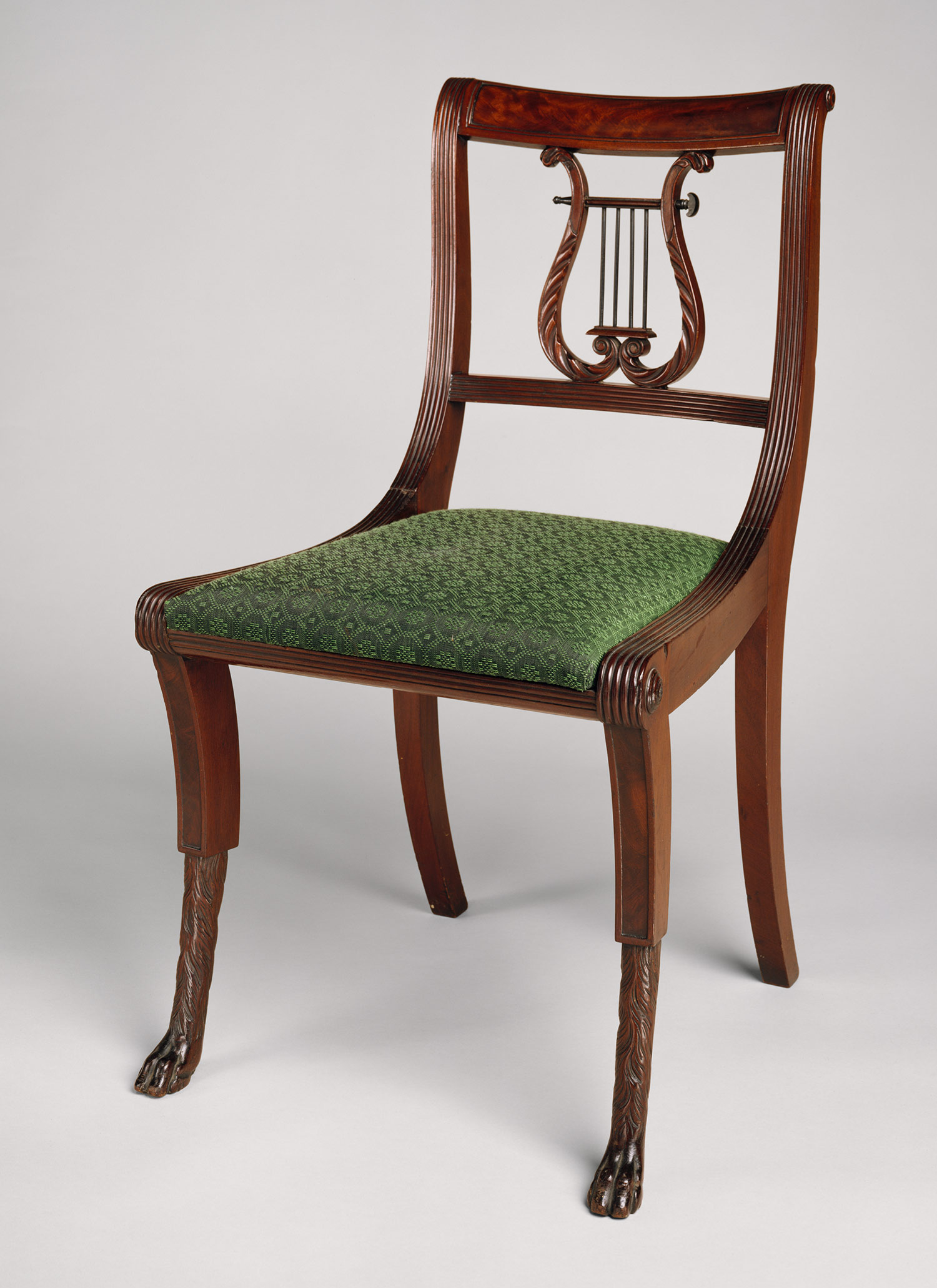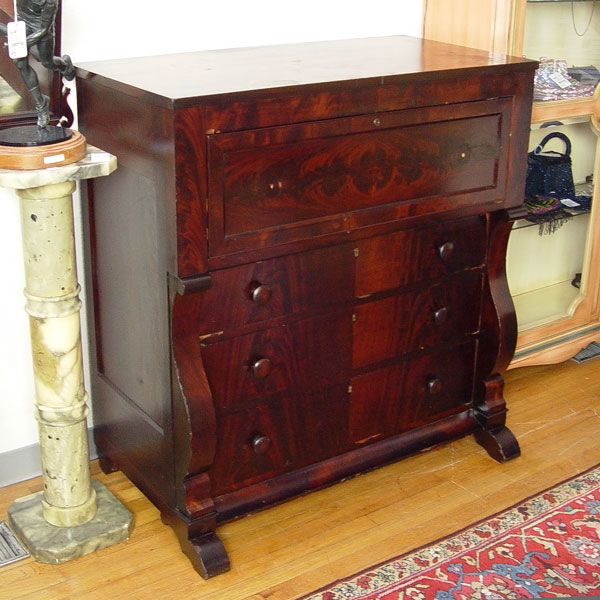It's turn of the century France. Napoleon has come to power and has decided to be decadent in the stylings of Lois the 14th, the sun king. Taking from the architectural notes of over a century prior, the second french empire style was born. Second French Empire is mostly known for its grand overstated presence, gold filigree, ornamentation, and Egyptian theme design style.
The furniture quickly spread influencing Italy and America within the next 30-40 years. (Yes. That was considered quick back then before the days of email and oil fueled trans-continental travel.) By the late 1820's, American furniture makers were creating pieces with ornate claw, paw, and dolphin feet, columns capped with bronze, and bronze filigree; some pieces overdone to the point where form dwarfed function. Then as the style became a practice, the designs centered around simple curved legs, harp or lyre scroll accents, dark satin polished mahogany hard woods, burled veneers, and simple elegance.
So came the birth of American Empire furniture. From 1830 - 1860 was the biggest production. Then a later, more modest, trend emerged in the 1890 - 1920's. You can find examples of good collections of such furniture today, like in the Philadelphia Museum of Art, or in the Red Room of the White House.
Below are more examples.
For a good sample, here are some external Google image search links:
Duncan Phyfe furniture
The Red Room of the White House
Now of course the question came as to the age of my secretary. It's apparent from all of the examples that I could compare it to that it's not part of the first wave. Having neither gilt columns nor ornate decadence, rather a simple form with the "s" or "f" shaped scroll front legs and turned wood drawer pulls, Ernest is definitely from the second wave. Not having a makers mark to help me, I would have to make an educated deduction. I'm looking at a piece from circa 1890 to 1900, better known as, the beginning of the second wave.
Note the following styling of pieces from that era:
The piece below was sold on eBay. Stating to be c 1900, it's the most similar piece I was able to find.
However since the auction was over 2 years ago, information on the seller, and the piece has been scoured from ebay's record.
Consulting with the amazingly knowledgeable store owners on Antique Row in center city Philly has provided me with a plethora of information. Most importantly, that this style of leg, too ornate and not practical enough to clean, pretty much died off in favour of a more simple leg.
Next, to clean, touch up, and finish Ernest.






No comments:
Post a Comment